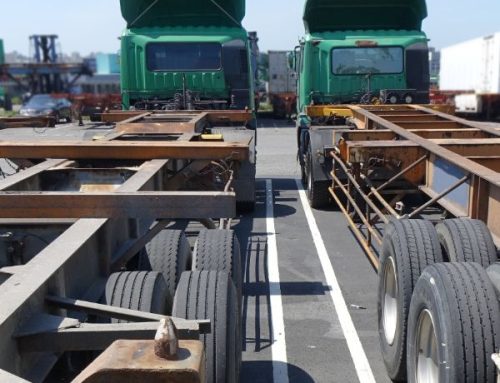Container chassis are a crucial component of the intermodal transportation system, which enables the movement of commodities between ships, trains, and trucks, among other modes of transportation. The container chassis is the foundation for securing and moving shipping containers, whose sizes can range from 20 to 53 feet. But how is a container connected to a chassis?
A container can be fastened to a chassis in a fairly simple manner. The chassis, which has different sets of pin lock/twist lock configurations, is first loaded with the container. Each corner of the chassis features a set of pin locks/twist locks that fit into slots on the corner fittings of the container.
The container is then fastened to the chassis by manually pushing in or rotating the twist locks. The size of the container will determine the proper configuration of pin locks/twist locks. A 20-foot container, for instance, will be attached to the chassis with four twist locks, whereas a 40-foot container will be attached to the chassis by a pair of pin locks at the front and a pair of twist locks on the rear.
Making sure the container is properly fastened is a crucial part of mounting a container to a chassis. The container may shift during shipment if the locks or corner fittings are loose, creating possible safety risks and cargo damage. Thus, it’s imperative to adhere to the correct safety procedures when mounting containers to the chassis.
The base for moving shipping containers between different forms of transportation is a container chassis. The corner fittings and pin/twist locks on a container must be positioned correctly for the container to be securely fastened to the chassis.







